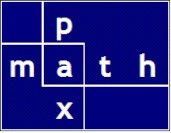Here’s the whole story visually:
Most everyone in math knows these tricks — here’s a summary of techniques used to make quick mental calculations of averages.
† In the problems below, consider the residual,
R is defined as the remainder above or below the guessed average, aka, the residual.
RS is defined as the residual sum.
- In school, I have 8 exam scores; what’s my average?
90
92
88
95
97
81
85
100
~~~




STEP by STEP (with explanation)
Guess maybe 90, then mentally calculate the running residual† sum using two or three numbers at a time:
say zero (for 90: 90 is neither above or below the guessed average ∴R=0; ∴RS = 0),
say zero (for 92 and 88: the average of 92 and 88 is neither above or below the guessed average ∴R=0; ∴RS = 0),
say 3 (for 95, 97, and 81: ∴R = 5 + 7 – 9; ∴RS = 3),
say 8 (for 85 and 100: ∴R= -5 + 10 = 5; ∴RS = 8).
Answer: The average is 90 + 8/8 = 91.
- Same problem — different guess. In school, I have 8 exam scores; what’s my average?
90
92
88
95
97
81
85
100
~~~



STEP by STEP (with explanation)
Guess maybe 85, then mentally calculate the running residual† sum using two or three numbers at a time:
say 15 (for 90, 92, 88: ∴R = 5 + 7 + 3 = 15; ∴RS = 15),
say 37 (for 95 and 97: ∴R = 10 + 12 = 22; ∴RS = 37),
say 48 (for 81, 85, and 100: ∴R = -4 + 0 + 15 = 11; ∴RS = 48),
Answer: The average is 85 + 48/8 = 91.
- Find average of 5 ‘hard numbers’ (with a lot of 9s, 8s, and 7s):
987
965
882
949
767
~~~





STEP by STEP (with explanation)
Assume a basis of 1000, mentally calculate the running residual† sum:
say 13 (for 987: ∴R = -13; ∴RS = 13 down),
say 48 (for 965: ∴R = -35; ∴RS = 48 down),
say 99 (for 949: ∴R = -51; ∴RS = 99 down),
say 217 (for 882: ∴R = -118; ∴RS = 217 down),
say 450 (for 767: ∴R = -233; ∴RS = 450 down),
Answer: The average is 1000 – 450/5 = 910.
- Incrementing an average, for example, I have 8 exam scores:
90
92
88
95
97
81
85
100
with an average of 91 (see Problem 1). Now I have a score of 78; what is my new average without re-summing?
Answer: It is simply 91 + (78 – 91)/9 = 91 – 13/9 = 89 5/9 = 89.55
Formula:![Rendered by QuickLaTeX.com \[prev\textunderscore n = 8\]](https://www.mathpax.com/wp-content/ql-cache/quicklatex.com-1f24bf9fe1986fda42e8bf9351f8d721_l3.png)
![Rendered by QuickLaTeX.com \[prev\textunderscore avg = 91\]](https://www.mathpax.com/wp-content/ql-cache/quicklatex.com-a0cb45b1940edd7de4bbfed56fa7cf33_l3.png)
![Rendered by QuickLaTeX.com \[new\textunderscore n = 9\]](https://www.mathpax.com/wp-content/ql-cache/quicklatex.com-4fcbe0a170680b2ea1524fa8cfaa7e3d_l3.png)
![Rendered by QuickLaTeX.com \[delta = new\textunderscore score - prev\textunderscore avg\]](https://www.mathpax.com/wp-content/ql-cache/quicklatex.com-a507816c4e12bf5fcd020ae75e2911d8_l3.png)
![Rendered by QuickLaTeX.com \[delta = -13\]](https://www.mathpax.com/wp-content/ql-cache/quicklatex.com-36228672b75f180ab8444e234a1aad19_l3.png)
![Rendered by QuickLaTeX.com \[\boxed{new\textunderscore avg = prev\textunderscore avg + \frac{delta}{new\textunderscore n}}\]](https://www.mathpax.com/wp-content/ql-cache/quicklatex.com-8ad545398ccc820270127e87de63e1c9_l3.png)
- [Powerful Formula] Incrementing an average, for example, I have 100 exam scores with an average of 87. Now I have a score of 100; what is my new average without re-summing?
Answer: It is simply 87 + (100 – 87)/101 = 87.1287
- Incrementing an average, for example, I have 10,000 exam scores with an average of 87. Now I have a score of 100; what is my new average without re-summing?
Answer: It is simply 87 + (100 – 87)/10001 = 87.0013 - [Very Powerful Formula] Incrementing an average, for example, I have 100 exam scores with an average of 87. Now I have 3 scores of {85, 80, 75}; what is my new average without re-summing?
87 – 85 = 2
87 – 80 = 7
87 – 75 = 12
Answer: It is simply 87 – (2 + 7 + 12)/103 = 86.7961
- Determine the lowest allowable score to maintain a certain average. Say I have 8 scores with an average of 94. What is the least score on my 9th exam to maintain at least an average of 90?
Answer: It is 94 + (90 – 94) · 9 = 58.
Formula:![Rendered by QuickLaTeX.com \[prev\textunderscore n = 8\]](https://www.mathpax.com/wp-content/ql-cache/quicklatex.com-1f24bf9fe1986fda42e8bf9351f8d721_l3.png)
![Rendered by QuickLaTeX.com \[prev\textunderscore avg = 94\]](https://www.mathpax.com/wp-content/ql-cache/quicklatex.com-8e088bdf00ade7e10325cdccdc809fa3_l3.png)
![Rendered by QuickLaTeX.com \[new\textunderscore n = 9\]](https://www.mathpax.com/wp-content/ql-cache/quicklatex.com-4fcbe0a170680b2ea1524fa8cfaa7e3d_l3.png)
![Rendered by QuickLaTeX.com \[new\textunderscore avg = 90\]](https://www.mathpax.com/wp-content/ql-cache/quicklatex.com-405079ff469944387ed3cdd04cd76781_l3.png)
![Rendered by QuickLaTeX.com \[delta = new\textunderscore avg-prev\textunderscore avg\]](https://www.mathpax.com/wp-content/ql-cache/quicklatex.com-46edbd4f1afc6855d4195ca1943824d7_l3.png)
![Rendered by QuickLaTeX.com \[delta = -4\]](https://www.mathpax.com/wp-content/ql-cache/quicklatex.com-aeca1e498fdea85d47e16e3073f11583_l3.png)
![Rendered by QuickLaTeX.com \[\boxed{least\textunderscore score = prev\textunderscore avg + delta\cdot new\textunderscore n}\]](https://www.mathpax.com/wp-content/ql-cache/quicklatex.com-6482f0f3225c326314737bb9f218373c_l3.png)
- [Very Very Powerful Formula] Determine the lowest allowable final exam score to maintain a certain average. Say I have 8 scores with an average of 94. What is the least score on my final exam to maintain at least a course grade of 90? Assume that the final exam is 40% of my course grade.
Answer: It is [90 – (94 x 0.6)]/0.4 = 84.
Formula:![Rendered by QuickLaTeX.com \[prev\textunderscore avg = 94\]](https://www.mathpax.com/wp-content/ql-cache/quicklatex.com-8e088bdf00ade7e10325cdccdc809fa3_l3.png)
![Rendered by QuickLaTeX.com \[new\textunderscore avg = 90\]](https://www.mathpax.com/wp-content/ql-cache/quicklatex.com-405079ff469944387ed3cdd04cd76781_l3.png)
![Rendered by QuickLaTeX.com \[final\textunderscore exam\textunderscore weight = 0.4\]](https://www.mathpax.com/wp-content/ql-cache/quicklatex.com-90e1952e9bfced1090b9c541e536fa18_l3.png)
![Rendered by QuickLaTeX.com \[non\textunderscore final\textunderscore exam\textunderscore weight = 1-0.4\]](https://www.mathpax.com/wp-content/ql-cache/quicklatex.com-8af6d394b66de0242dc41740e449f675_l3.png)
![Rendered by QuickLaTeX.com \[non\textunderscore final\textunderscore exam\textunderscore weight = 0.6\]](https://www.mathpax.com/wp-content/ql-cache/quicklatex.com-04efef9fdc2105096bef1c25a736caef_l3.png)
[Wicked Powerful Formula] Alternative and easier formula:![Rendered by QuickLaTeX.com \[least\textunderscore score = \frac{new\textunderscore avg-(prev\textunderscore avg\cdot non\textunderscore final\textunderscore exam\textunderscore weight)}{final\textunderscore exam\textunderscore weight}\]](https://www.mathpax.com/wp-content/ql-cache/quicklatex.com-1aa59424f0c9063cb821f4589cc608f3_l3.png)
![Rendered by QuickLaTeX.com \[delta = new\textunderscore avg - prev\textunderscore avg\]](https://www.mathpax.com/wp-content/ql-cache/quicklatex.com-7fc6f27b6381c3bbf70e8a3c7b84c266_l3.png)
![Rendered by QuickLaTeX.com \[\boxed{least\textunderscore score = prev\textunderscore avg+\frac{delta}{final\textunderscore exam\textunderscore weight}}\]](https://www.mathpax.com/wp-content/ql-cache/quicklatex.com-78346f1d3bb85cd15d776fcb7b02291b_l3.png)
- So, how much does a 100 raise your average?
Formula:![Rendered by QuickLaTeX.com \[variance = 100 - prev\textunderscore avg\]](https://www.mathpax.com/wp-content/ql-cache/quicklatex.com-b3119005c4a12caee75b95e6ee23517f_l3.png)
![Rendered by QuickLaTeX.com \[\boxed{change\textunderscore avg = \frac{variance}{new\textunderscore n}}\]](https://www.mathpax.com/wp-content/ql-cache/quicklatex.com-d2f331681d856ab7d7efedad2c09dc90_l3.png)
Enjoy!




